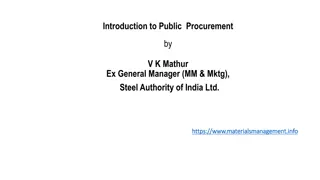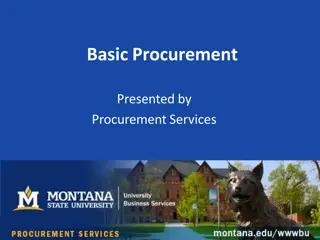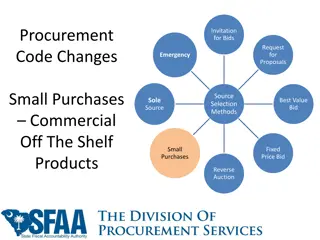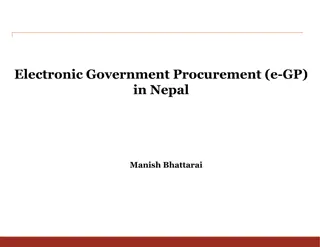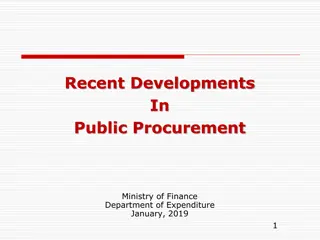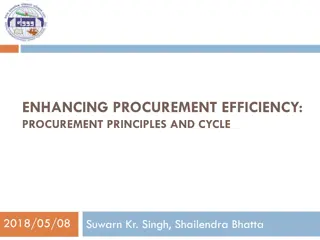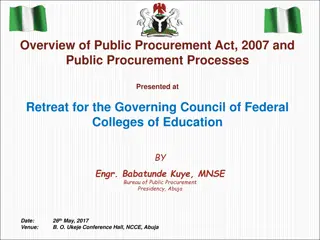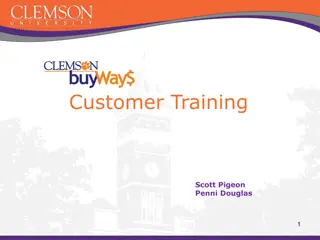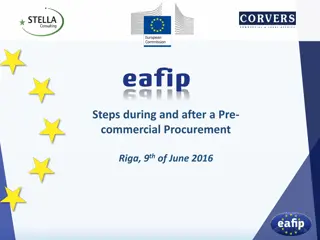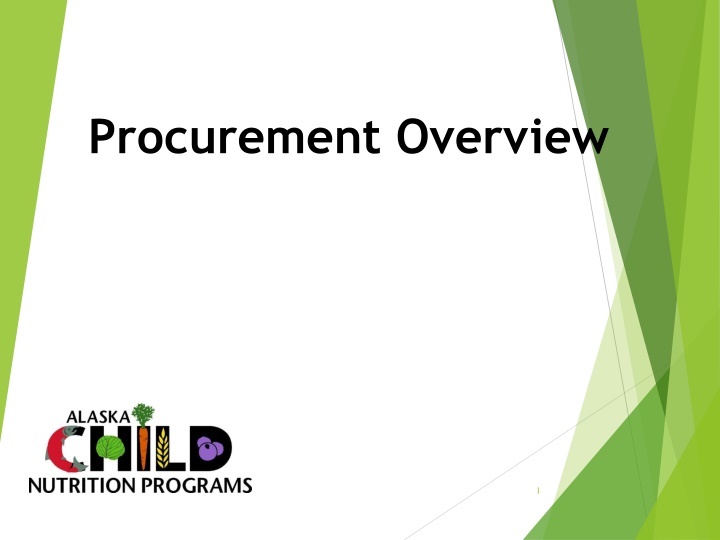
Procurement Requirements and Internal Controls
Explore the essential aspects of procurement, including internal controls, allowable cost considerations, and procurement plan templates. Learn about the importance of free and open competition, conflict of interest, and cost principles under 2 CFR Part 200. Ensure compliance with procurement regulations and guidelines for effective program administration.
Download Presentation

Please find below an Image/Link to download the presentation.
The content on the website is provided AS IS for your information and personal use only. It may not be sold, licensed, or shared on other websites without obtaining consent from the author. If you encounter any issues during the download, it is possible that the publisher has removed the file from their server.
You are allowed to download the files provided on this website for personal or commercial use, subject to the condition that they are used lawfully. All files are the property of their respective owners.
The content on the website is provided AS IS for your information and personal use only. It may not be sold, licensed, or shared on other websites without obtaining consent from the author.
E N D
Presentation Transcript
Session Objectives Understand Internal Controls Review purchases methods Identify procurement resources available Understand new procurement monitoring 2
Procurement Requirements Internal Controls under 2 CFR 200 Child Nutrition Programs must have: A Procurement Plan A process to determine allowability A code of standards of conduct for procurement
Template Procurement Plan Section I General Requirements Attachment 1: Informal Quote Log Attachment 2: Market Basket Study Section II Micro Purchasing Attachment 3: Capital Expenditure Pre-Approval Request Section III Equipment Section IV Small Purchasing Section V Formal Procurement Section VI Noncompetitive Negotiation Section VII Emergency Purchasing
Internal Controls Free and open competition Code of conduct for contractual or purchasing purposes Who? Includes employees, officers, and agents Conflict of interest is real or apparent Includes gratuities, favors, monetary compensation From? Contractors, potential contractors, sub- contractors
Allowable Cost Considerations Allowable Costs 2 CFR Part 200.400 Cost Principles All expenditures made from the nonprofit food service account must be allowable To be allowable, costs must meet the following criteria: Be necessary, reasonable, and allocable for proper and efficient administration of the program Be incurred for the support of program operations Be consistent with State/local policies applied uniformly 7
Allowable Cost Considerations Be accorded consistent treatment throughout the organization Conform to limitations/exclusions in Circular and program regs Be adequately documented and receive of all applicable credits 8
Allowable Cost Considerations What is the priority status for use of nonprofit food service account funds? Is equipment for food preparation current and in good working order? What is the status of the nonprofit food service account? Are net cash resources in excess of the 3 months average operating expenditures? 9
Allowable Cost Considerations How does this product/service directly benefit the operation and/or improvement of the food service program What is the estimated cost of the product/service? Would the purchase of the product/service be duplicative and not cost effective? What alternative options through low/no cost ways to address the need have been taken? (i.e., purchasing low/lower cost items; using the services of volunteers; expanding an existing local education agency contract for such services, etc.) 10
Allowable Cost Considerations Would the proposed cost divert nonprofit school food service account funds from supporting food service operation staff time and effort and thus impair or diminish meal service? Does this proposal include the purchase of land, a building, or construction of a building? Is this cost for remodeling of a rented facility? Is the proposed cost for a capital expenditure other than the acquisition of real property (i.e. building, land)? If yes, the school/agency must receive pre-approval from the State agency unless the equipment is identified on the State agency pre-approved list, if available, per Policy Memorandum SP 31-2014, State Agency Prior Approval Process for SFA Equipment Purchases, dated March 28, 2014. 11
Purchasing methods Purchasing Type Federal thresholds Micro Purchasing Less than $3,500 Equipment Over $5,000 per item Small Purchasing Less than $150,000 Formal Greater than $150,000 or FSMC
Procurement Methods Small Purchase Threshold < (Federal Threshold = $150,000) > Formal <$150,000 Informal Micro-Purchases <$3,500 Small Purchases <$150,000 Sealed Bids (IFBs) & Competitive Proposals (RFPs) * Requires public advertising Distribute equitably among suppliers Requires price quotes from 2+ bidders 14
Micro-Purchases Micro-Purchase Threshold = < $3,500 2 CFR Part 200.67 and 2 CFR Part 200.320 Aggregate dollar amount does not exceed the micro- purchase threshold. a) Distribute micro-purchases equitably among qualified suppliers. b) May be awarded without soliciting competitive quotations if the price is considered reasonable. c) Best practice include this in the procurement plan. 15
Micro-PurchaseThreshold The Federal $3,500 threshold applies to the same vendor for each procurement activity. The most restrictive micro-purchase threshold applies (Federal, State, or local). 16
Small Purchase Threshold States and locals may set a more restrictive small purchase threshold. The most restrictive threshold applies (Federal, State, or local). EXAMPLE Federal Small Purchase Threshold $150,000 State Small Purchase Threshold n/a Local Small Purchase Threshold $40,000 17
Quote Options Quotes are not optional, but agencies have 2 options for quotes Quotes must be obtained by 2 or more vendors Market Basket study Quote per purchase or per contract Best practice include this in the procurement plan. 18
Market Basket Study Used for informal procurement only <$150,000 List the top purchased items Purchased most frequently no less than 20 items Greatest purchased amounts i.e. an agency may purchase more cases of crackers than ground beef, but ground beef is a higher portion of the food budget Select 2 or more vendors/stores for quotes Must be conducted annually 19
Quotes Use when the estimated amount of your purchase falls below the small purchase threshold. Small purchases require that schools: a) Develop written specifications; b) Obtain price quotes from 2 or more responsible and responsive vendors; and c) Document all quotes. 21
Small Purchase Procurement Award to responsive and responsible bidder with lowest price a) Responsive means that the vendor submits a bid that conforms to all specifications and terms of the solicitation. b) Responsible means that the vendor is capable of performing successfully under the terms of the contract. Document all procedures 23
Debarment & Suspension Contracts must include certification of debarment and suspension of vendors. All program participants must ensure that they do not enter into a covered transaction with a suspended or debarred entity by doing one of the following [2 CFR 180.300)]: 1. Check the System of Awards Management (SAM) system which lists all suspended and debarred organizations 2. Collect a certification form from the organization stating that they are not suspended or debarred; or, 3. Include a clause in their contract and solicitations. 24
Small & Minority Business Enterprise & Labor Surplus Area Firms All agencies must take affirmative steps to ensure that minority firms and women s business enterprises are used when possible. Placing qualified small and minority businesses and women's business enterprises on solicitation lists; Assuring that small and minority businesses, and women's business enterprises are solicited whenever they are potential sources; Dividing total requirements, when economically feasible, into smaller tasks or quantities to permit maximum participation by small and minority businesses, and women's business enterprises; Establishing delivery schedules, where the requirement permits, which encourages participation by small and minority businesses, and women's business enterprises; Using the services and assistance, as appropriate, of such organizations as the Small Business Administration and the Minority Business Development Agency of the Department of Commerce; and Requiring the prime contractor, if subcontracts are to be let, to take the affirmative steps listed in paragraphs (1) through (5) of this section. 25
Local Sources for Purchasing Products Products from local sources can span the meal service If you use a geographic preference, document the process in Procurement Plan The definition of local Geo Pref rate Interest in serving and purchasing products from local sources can be stated throughout a solicitation. All purchases are subject to federal procurement regulations. Alaska funds, not USDA, requires a 7% geo pref 26
State Agency Pre-Approval Food Service Management Companies (FSMCs) Equipment purchases using the non-profit food service account $5000 or more per unit When the approved budget needs revised for the purchase (CACFP and SFSP only) 27
Resources 28
Procurement Resources Child Nutrition Programs Procurement Page Procurement Plan template Prototype forms USDA policy memos Recorded Webinars eLearning trainings 29
Procurement Resources Links to other resources: Institute for Child Nutrition Procurement in the 21st Century USDA Procurement Resources Local Procurement Buying Guide Finding, Buying, Serving Local Webinars 30
Session Summary Understand Internal Controls Familiar with purchases methods Understand new procurement monitoring Identify procurement resources available 31
In accordance with Federal civil rights law and U.S. Department of Agriculture (USDA) civil rights regulations and policies, the USDA, its Agencies, offices, and employees, and institutions participating in or administering USDA programs are prohibited from discriminating based on race, color, national origin, sex, disability, age, or reprisal or retaliation for prior civil rights activity in any program or activity conducted or funded by USDA. Persons with disabilities who require alternative means of communication for program information (e.g. Braille, large print, audiotape, American Sign Language, etc.), should contact the Agency (State or local) where they applied for benefits. Individuals who are deaf, hard of hearing or have speech disabilities may contact USDA through the Federal Relay Service at (800) 877-8339. Additionally, program information may be made available in languages other than English. To file a program complaint of discrimination, complete the USDA Program Discrimination Complaint Form, (AD-3027) found online at: http://www.ascr.usda.gov/complaint_filing_cust.html, and at any USDA office, or write a letter addressed to USDA and provide in the letter all of the information requested in the form. To request a copy of the complaint form, call (866) 632-9992. Submit your completed form or letter to USDA by: (1) Office of the Assistant Secretary for Civil Rights 1400 Independence Avenue, SW Washington, D.C. 20250-9410; mail: U.S. Department of Agriculture (2) fax: (202) 690-7442; or (3) email: program.intake@usda.gov. This institution is an equal opportunity provider.

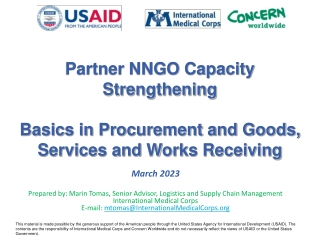


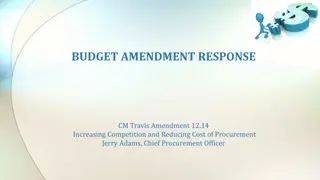
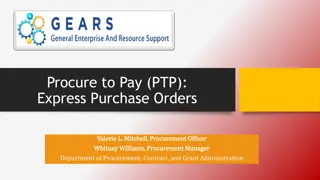
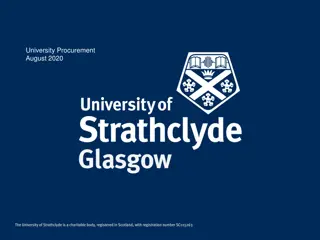
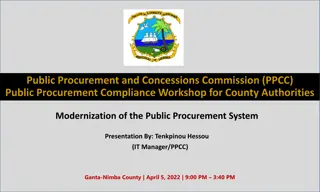
![Comprehensive Overview of Corruption Watch Submission on Public Procurement Bill [B18B-2023]](/thumb/138344/comprehensive-overview-of-corruption-watch-submission-on-public-procurement-bill-b18b-2023.jpg)
